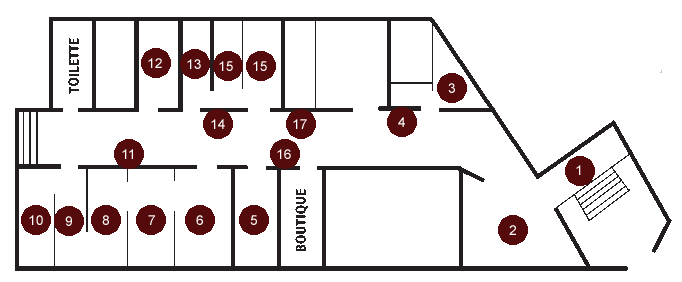Section 6: Room 106

About 2,400 full-time Stasi officials were active in the district of Leipzig. Some 800 of them worked in the “Runde Ecke”. They were last headed by Lieutenant-General Manfred Hummitzsch, whose uniform can be seen here. He was in charge of 45 departments and local branches, whose organisational structure corresponded to that of the Ministry of State Security as a whole. The division into departments reflected the structure of society at large, as the Stasi felt responsible for all areas of life. Local branches ensured that the whole population was kept under surveillance.
With a mass of different honours the Stasi rewarded especially deserving full-time Stasi employees as well as “Unofficial Personnel” (often referred to by the German abbreviation ‘IM’). Medals made of Meissner-porcelain, the so-called “white gold”, were for example custom-made for the Stasi. Many of those decorations and badges were also used by the National People's Army. The only difference lay in the enclosed diploma – for employees of the Stasi it was personally signed by the Minister of State Security, Erich Mielke.
In addition to full-time personnel, in 1989 there were some 10,000 IM in the Leipzig district, who worked in various functions. Recruited by means of elaborate procedures, they were obliged to maintain absolute secrecy concerning their contact with the Stasi. Each IM attended meetings with his or her case officer in ‘conspiratorial flats’, where they were given assignments and reported on their activities. These conversations were sometimes recorded on tape and later typed up; often the informers handed in reports they had typed themselves beforehand. These reports filled the informers files in the “Runde Ecke”. According to Erich Mielke, Minister of State Security from 1957 until 1989, these informers were the “main weapon in the struggle against the enemy”.
The Stasi served the SED, the ruling communist party. The Stasi was the SED’s “sword and shield”, and the Stasi is known to have perverted justice on the direct orders of the party. The Stasi had its own criminal law commentary, which was kept secret. It also ran its own law college, which was not listed in any public study guide. Furthermore, the Stasi kept the rubber stamp of the magistrate of the local court for its own usage.






